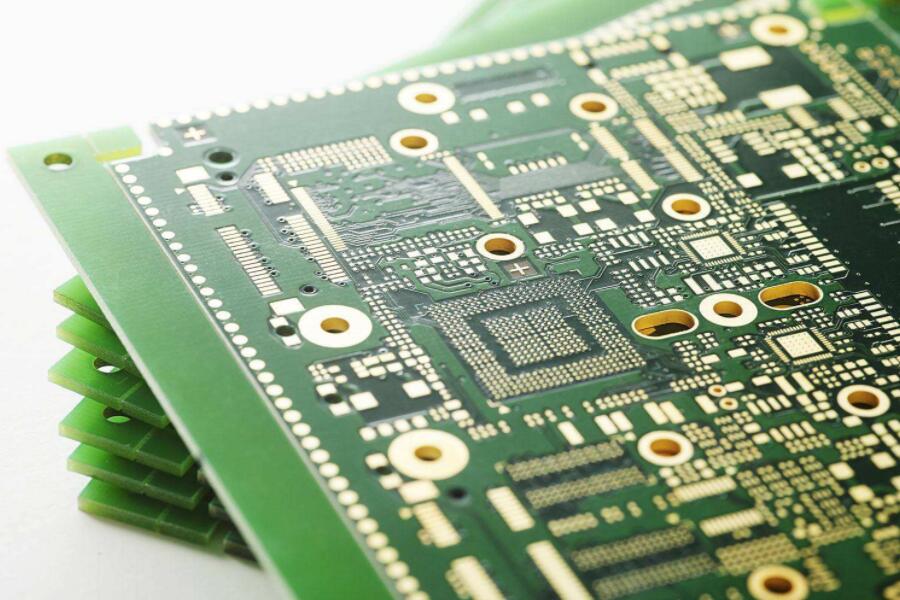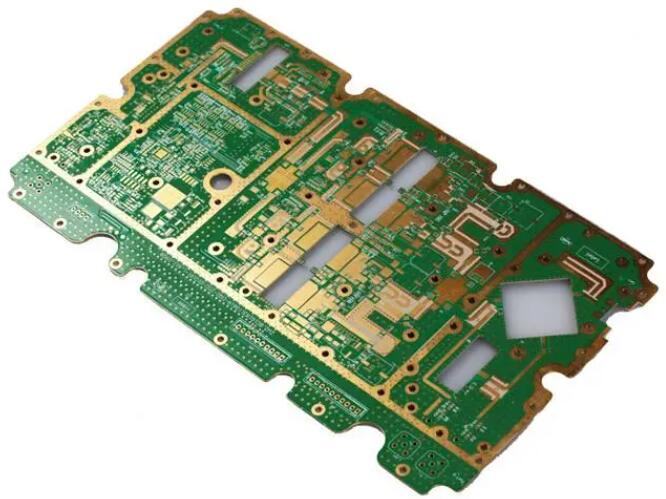With the development and construction of 5G communication, the electronic equipment industry has an increasing demand for high-frequency and high-speed PCBs. Due to different use environments, high-frequency PCB and high-speed PCB have many common features and some differences. Based on the use environment of high frequency and high speed PCB and the resin system of plate, this paper expounds the characteristics of high frequency PCB and high speed PCB, and looks forward to the future development of high frequency PCB and high speed PCB.
The demand of 5G network for high-frequency and high-speed PCB
5G, the fifth generation mobile communication. Cellular mobile communication has undergone four upgrades from analog communication (1G) to the current popular LTE (4G). Since 2012, the research and testing of 5G networks have made rapid progress. In the past, from 1G to 4G, the main scenario was the network communication between people, while 5G network will meet the interconnection of everything and start a new round of information network revolution. The 5G communication industry chain mainly includes the following five important links:
1. Network planning and design (preliminary technical research and network construction planning);
2. Major wireless equipment (core network, base station antenna, radio frequency device, optical device/optical module, small base station, etc., wireless supporting, network coverage and optimization links are deployed);
3. Transmission equipment (after wireless equipment, wired transmission link is required, followed by optical fiber and cable, system integration, IT support, value-added services, etc.);
4. Terminal equipment (chip and terminal matching);
5. Operator. In addition to the above five important links, the following two links are also important:
6. PCB/CCL industrial chain (used for base station RF, baseband processing unit, IDC and core network router, etc.);
7. Dielectric waveguide filter (base station radio frequency).
In the process of 5G construction, the frequency bands used by products in different industries are different, which leads to different requirements for high-frequency high-speed PCB materials for different products in different industries. It can be seen that 5G network is the comprehensive application of multi-band microwave. Therefore, the choice of high-speed PCB and high-frequency PCB for products in different industries will be different.

high-speed PCB
Features of high frequency and high speed PCB
1. Dielectric constant Dk and dielectric loss Df of materials
When it comes to high-frequency high-speed PCB, it is inevitable to talk about two concepts: "dielectric constant - Dk" and "dielectric loss - Df". PCB dielectric layer used for high-speed digital signal transmission not only plays the role of insulating layer between conductors, but also plays the role of "characteristic impedance", and also affects signal transmission speed, signal attenuation and heating
The size of dielectric loss (Df) indicates the attenuation degree of signal transmission. The attenuation of this signal transmission is often caused by heat generation and consumption. With the high frequency and high speed digital signal transmission, the signal attenuation and heat consumption will inevitably increase rapidly with the high frequency and high speed digital signal transmission. For high-frequency and high-speed digital signal transmission, the smaller the dielectric loss (Df), the better.
In the development process of high-speed products and high-frequency products, the dielectric constant (Dk) and dielectric loss (Df) of plates are required to develop in a smaller direction. However, there are still some differences in the demand for plates between high-frequency products and high-speed products.
2. Characteristics of high-speed materials
High-speed products pay more attention to the dielectric loss (Df) of plates. The grades of high-speed materials commonly used in the market are also divided according to the dielectric loss (Df). Different substrate materials are divided into conventional loss, medium loss, low loss, extremely low loss and ultra-low loss according to the dielectric loss of the substrate.) Five transmission signal loss corresponding levels.
3. High frequency material characteristics
Compared with high-speed materials, high-frequency materials pay more attention to the size and change of dielectric constant (Dk) of materials. High frequency products are very sensitive to the change of dielectric constant Dk. Therefore, the focus of high-frequency materials is the stability of dielectric constant (Dk), as well as the dielectric thickness, temperature drift coefficient and stroboscopic performance of materials. There is no clear classification standard for high-frequency materials in the industry, but many PCB manufacturers roughly classify high-frequency PCBs according to the dielectric constant (Dk) of materials. Materials with the same dielectric constant Dk. are considered to be similar and can be substituted for each other.
In the field of high-frequency materials, there is also a common way to divide materials into polytetrafluoroethylene (PTFE) materials and non-PTFE materials. This is closely related to the application field of high-frequency products. The current RF field can be divided into two parts. First, the frequencies commonly used below 6GHZ are 3.5GHZ, 2.7GHZ and 1.8GHZ. The main products are power amplifier, antenna calibrator, array and other products. The other part is that the frequencies commonly used in the millimeter wave field above 20GHZ are 24GHZ, 66GHZ and 77GHZ, and the main products are radar products. This is mainly because with the increase of frequency, the stroboscopic effect and dielectric loss of non-PTFE products have a sharp increase in the impact on signal transmission, and PTFE materials have better performance characteristics.

high speed PCB
Development prospect of high frequency and high speed PCB
The traditional copper clad plate material has large transmission loss and cannot meet the requirements of high frequency signal transmission quality. Therefore, the most important performance of PCB substrate materials used in 5G communication is to meet the requirements of high frequency and high speed, as well as the requirements of integration, miniaturization, lightweight, multi-function and high reliability. In particular, resin materials require low dielectric constant (Dk), low dielectric loss (Df), low coefficient of thermal expansion (CTE) and high thermal conductivity. At present, hard copper clad laminate represented by polytetrafluoroethylene (PTFE) thermoplastics and hydrocarbon resin (PCH) thermosetting materials has occupied most of the high frequency/high speed PCB substrate market due to its incomparable low dielectric properties. In recent years, high frequency/high speed PCB substrates of new resin materials such as polyphenylene oxide (PPO or PPE), bismaleimide (BMI), cyanate ester (CE), triazine resin (BT), benzoxazine (BOZ), benzocyclobutene (BCB) and related modifications have been developed.
Polyphenylene oxide (PPO or PPE), whose dielectric properties are second only to PTFE, is a material that has attracted the attention of the industry in recent years
In addition, the processability of PPO material is much better than that of PTFE material, so at present, the very low loss and ultra-low loss in high-speed PCB are mostly modified PPO resin, such as Panasonic M6, M7N, and IT968, IT988GSE of Lianmao. The resin system of high-frequency PCB material is mainly polytetrafluoroethylene (PTFE) thermoplastic material and hydrocarbon resin (PCH). Although extremely low dielectric loss (Df) and stable dielectric constant (Dk) can be obtained, the poor machinability of the material is not suitable for high multilayer boards, and is not suitable for processing products of HDI boards. With the development of 5G communication, the PCB complexity of high frequency products is also getting higher and higher (traditional high frequency PCB is mainly single-sided and double-sided, and the development of multilayer boards even has HDI design requirements) In recent years, material developers have also used PPO resin to make high frequency PCB. While ensuring that the board has extremely low dielectric loss (Df) and stable dielectric constant (Dk), good PCB processability can be obtained. For example, the high-frequency PCB materials such as IT-88GMW, IT-8300GA, IT-8350G, IT-8338G, IT-8615G launched by Lianmao adopt the mixed system of modified PPO resin and hydrocarbon resin. While meeting the requirements of high-frequency signal transmission, the machinability of the material is greatly enhanced.
On the one hand, the development of 5G communication towards higher speed and higher frequency inevitably requires the development of material dielectric loss (Df) and dielectric constant (Dk) towards a smaller direction; On the other hand, 5G products require miniaturization and more unification. The corresponding PCB is bound to develop in the direction of high multilayer and even HDI, which requires good machinability of materials. At present, the use of polyphenylene oxide (PPO or PPE) resin is a good development direction, whether from the perspective of high-frequency PCB materials or high-speed PCB materials.